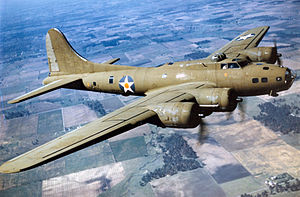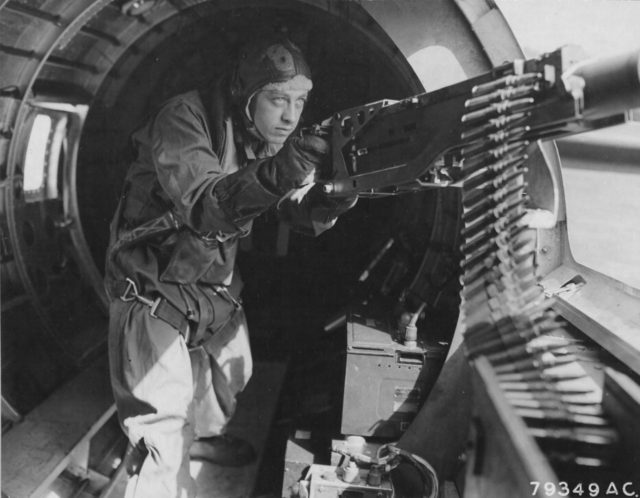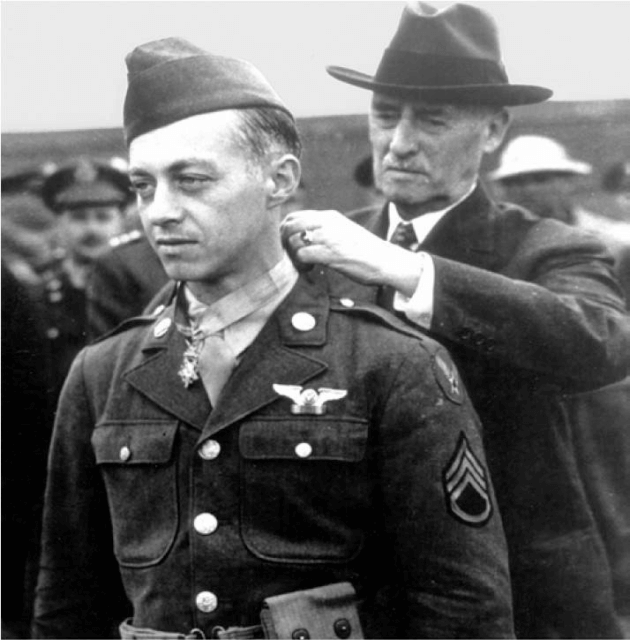It is perhaps a tale that Veterans of the United States Air Force are more familiar with, the story of “Airman Snuffy.”
Given a choice between jail or the military, Maynard Smith reluctantly opted for the army. This 31-year-old private was a discipline problem from the start and was reported to be spoiled, insubordinate, and unliked by all he encountered.
When he arrived in England for combat as an aerial gunner, no one wanted to fly with him, and it was only upon direct orders that the other crews would do so. Odd as it may seem it was on his very first mission that Maynard “Snuffy” Smith inexplicably emerged with the Medal of Honor.
Troublemaker
Born in 1911 Caro, Michigan, Maynard Smith developed an early reputation as a spoiled kid prone to trouble and the ability to annoy almost anyone. On leaving school, it was apparent his plan was to live off his inheritance for as long as he could until eventually taking up a job in the tax field.
Smith fathered a child which oddly enough led to his unique path to the military. He and the child’s mother separated, but his failure to pay child support put the 31-year-old troublemaker in the hands of a judge. He was given two choices in 1942, go to jail or join the military.
Once in the Army, Smith found it tough taking orders from anyone particularly men nearly ten years younger than him. Consequently, he opted for the quickest route to acquire rank which at the time was to volunteer for Aerial Gunnery School.
Considering the bombers he was to crew often had a 50% survival rate; it seemed an odd choice for a typically selfish man.

By the time he arrived in England in 1943, his obnoxious personality and reputation for failing to be a team player preceded him. Making no friends in his new location, he earned the nickname “Snuffy” for his obtuse personality.
The First Mission
On May 1, 1943, now Staff Sergeant Smith climbed into the ball gun turret of his B-17 and headed out for France. The target was a series of U-Boat pens near Saint-Nazaire which was a heavily defended location with the nickname “flak city.”
Despite its reputation, at least one group of bombers arrived on target and met little resistance from the German forces.
Dropping their bombs and heading for home, the crew of Smith’s B-17 felt they had made it. Unfortunately, the lead plane made a navigational error, and while he believed they were heading for England, he was leading the group straight to the heavily fortified city of Brest, France.

As the group began to descend from the clouds, they were met by a welcoming party of German fighters and intense anti-aircraft fire. Smith’s bomber was instantly hit. Enemy fire ripped through the plane’s fuel tanks causing a massive fire to erupt in the middle of the fuselage. Their communications system went down, the oxygen system was destroyed, and the power to Smith’s ball turret was knocked out.
With the fire raging, three of the crew members decided it was time to bail out. They parachuted over the channel never to be heard from again.
Smith, on the other hand, leaped into action. He tended to the wounded crew as the pilots attempted to navigate the plane home. However, German fighters were still riddling the plane with bullets, and the fire continued to rage threatening to melt the fuselage. They were a long way from home and Smith spent the next 90 minutes treating the wounded, manning the machine gun, and fighting the fire.
90 Minutes of Gallantry
The temperature in the plane became so intense the extra ammo began to explode. Smith threw the exploding ammunition through the holes in the fuselage the fire had created. Anything not bolted down he ejected. When the fire extinguishers were empty, Smith donned some protective clothing and attacked the fire by hand. As the plane finally approached England Smith had put the fire out, in part by urinating on it.

The plane landed on the first available airfield and broke in half upon touchdown. Somehow they had made it and the man they dubbed “Snuffy” now found himself an unlikely hero.
Unfortunately for Smith, it did nothing to alleviate his personality problems, and his fellow soldiers only seemed to resent him more. The week that Smith was to receive his Medal of Honor from the Secretary of War he was assigned to KP duty for disciplinary problems.
After the presentation, Smith continued to fly on four more missions before being diagnosed with “operational exhaustion”. He was reduced in rank to Private with a clerical job far from the skies where he earned the nation’s highest military honor.
Smith lived until 1984. He was laid to rest at Arlington National Cemetery as the war hero with whom no one wanted to fly. His actions on that fateful May day in 1943 will forever remain noted as a real display of inexplicable courage; obnoxious personality or not.
